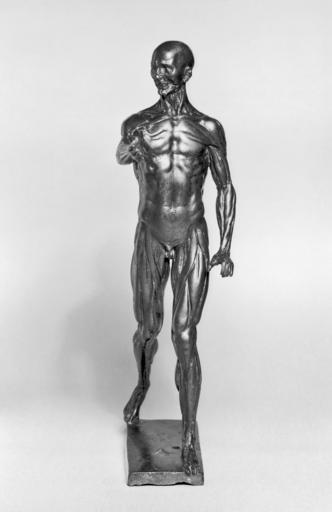MAKE A MEME
View Large Image

| View Original: | Italian_-_Anatomical_Figure_of_a_Man_-_Walters_5430.jpg (1166x1800) | |||
| Download: | Original | Medium | Small | Thumb |
| Courtesy of: | commons.wikimedia.org | More Like This | ||
| Keywords: Italian - Anatomical Figure of a Man - Walters 5430.jpg By the 1600s artists who specialized in figural compositions were increasingly aware of the need to understand the structure of muscles in order to portray movement effectively Some artists most famously Leonardo da Vinci 1452-1519 carried out dissections This flayed figure with muscles exposed could have served as a study object for artists Sir Peter Paul Rubens 1577-1640 made use of a similar statuette The representation of a dead body as if alive plays on the paradox of artists' ability to imbue with life what is inanimate The level of detail would have been insufficient for a medical student for whom publications on anatomy by the Flemish physician Vesalius photo were more useful between 1590 1660 Baroque bronze cm 33 2 accession number 54 30 14070 Henry Walters Baltimore date and mode of acquisition unknown Walters Art Museum Henry Walters Acquired by Henry Walters Man Glory Jest and Riddle A Survey of the Human Form Through the Ages Fine Arts Museums of San Francisco San Francisco; Fine Arts Museums of San Francisco San Francisco 1964-1965 place of origin Flanders Belgium Walters Art Museum license Baroque sculpture in the Walters Art Museum Italian art in the Walters Art Museum Media contributed by the Walters Art Museum needs category review | ||||